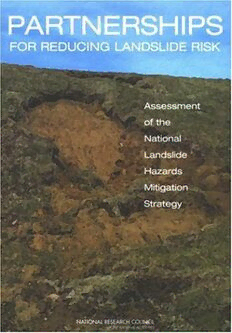
Partnerships for Reducing Landslide Risk: Assessment of the National Landslide Hazards Mitigation Strategy PDF
144 Pages·2004·12.199 MB·English
Most books are stored in the elastic cloud where traffic is expensive. For this reason, we have a limit on daily download.
Preview Partnerships for Reducing Landslide Risk: Assessment of the National Landslide Hazards Mitigation Strategy
Description:
Landslides occur in all geographic regions of the nation in response to a wide range of conditions and triggering processes that include storms, earthquakes, and human activities. Landslides in the United States result in an estimated average of 25 to 50 deaths annually and cost $1 to 3 billion per year. In addition to direct losses, landslides also cause significant environmental damage and societal disruption. This report reviews the U.S. Geological Survey's (USGS) National Landslide Hazards Mitigation Strategy, which was created in response to a congressional directive for a national approach to reducing losses from landslides. Components of the strategy include basic research activities, improved public policy measures, and enhanced mitigation of landslides. The NRC report commends the USGS for creating a national approach based on partnerships with federal, state, local, and non-governmental entities, and finds that the plan components are the essential elements of a national strategy. The report recommends that the plan should promote the use of risk analysis techniques, and should play a vital role in evaluating methods, setting standards, and advancing procedures and guidelines for landslide hazard maps and assessments. The NRC panel suggests that substantially increased funding will be required to implement a national landslide mitigation program, and that as part of a 10-year program the funding mix should transition from research and guideline development to partnership-based implementation of loss reduction measures.
See more
The list of books you might like
Most books are stored in the elastic cloud where traffic is expensive. For this reason, we have a limit on daily download.
